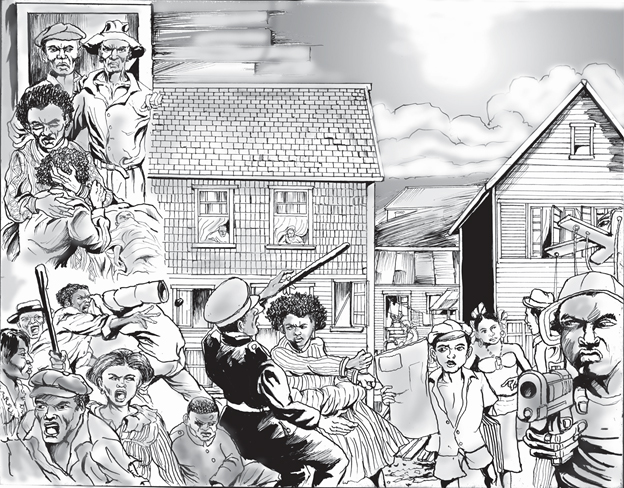By Barrington Braithwaite
The period beginning in the 1950’s was characterised by joblessness, and sub-standard living conditions. This despite some development in the urban housing sector in areas like East and West Ruimveldt and Laing Avenue. These areas were populated by residents from mainly the traditional South Georgetown areas (from Hadfield Street to now South Ruimveldt). The ward of Sophia would not be developed for another thirty years. The growth of the urban population also included some rural folk driven to the city by joblessness in their rural communities. The tail end of the global “Oil Crisis’ coupled with the 1977 destruction by fire of the Rice Marketing Board Complex, contributed to further decline in mass jobs.
The late eighties witnessed a fresh surge of criminal activity. Many of these have to be viewed against the backdrop of loss of income resulting from high unemployment. The end of the ‘suitcase trade’ which had become a fairly lucrative pursuit for a number of working class Guyanese also impacted on the upward movement of crime. Drug smuggling also grew in intensity and the smuggling of guns and drugs from neighbouring countries including Suriname contributed to the re-shaping of the crime culture. A point was arrived at where it was widely believed that there was little if any distinction between gun-running and drug smuggling and what was purportedly the illegal cross-border importation of consumer items into Guyana. This was a period during which the grotesque face of crime manifested itself in what was believed to be a succession of ‘hits’ that claimed the lives of persons believed to be part of the criminal underworld.
Pickpocketing, unsurprisingly, stayed the course, the ‘snatch and run’ option being a lower, less hazardous realm of crime which, understandably, yielded smaller returns. This was a period that saw high levels of unemployment as a key factor for rising crime.
The first widely publicised local bank robbery occurred in 1979. Small arms were used to target a bank in Linden and a bank manager was killed. The 80’s, through 90’s and into the 21st century saw the proliferation of armed gangs ‘sporting’ combat weapons as drug feuds, some of which appeared to have had their origins in the USA and which spilled over into bloodshed here. Two points should be made at this juncture. The first is that initiatives designed to strengthen the police response to the surfeit of crime led to accusations of extra-judicial killings and to attendant serious damage to the image of the Force. The second is the fairly widespread assertion that the spate of extra-judicial killings grew significantly during the early 1990’s and that many of them were politically linked. The period saw a number of well-publicised gunfights between the police and criminals that sometimes led to loss of lives.
These troubled times led to endless accusations about incidents that were underpinned by ethnic and political motivation, charges which, understandably, tended to accentuate existing divisions in the society. It was felt, as well, that the problem was exacerbated by serious institutional weaknesses in the Force that retarded its ability to properly analyse the crime phenomenon and to roll out an appropriate anti-crime strategy. This was the period when accusations of rogue policemen operating outside the framework of the law flourished. Some of them were even said to be ‘in the pay’ of the criminal element.
By the late 90s guns had become commonplace in the commission of crimes and increasingly the police became tainted by the phenomenon. Weapons were sourced from neighbouring countries and rumours of close relationships between ‘criminals for hire’ and elements in the business community flourished.
The ghoulish era of gruesome executions and a population cowering in fear may have disappeared but the scars of the period remain and the failure of the state to reform the law enforcement machinery to meet the crime challenge may well have laid the foundation for other challenges in the period ahead.






